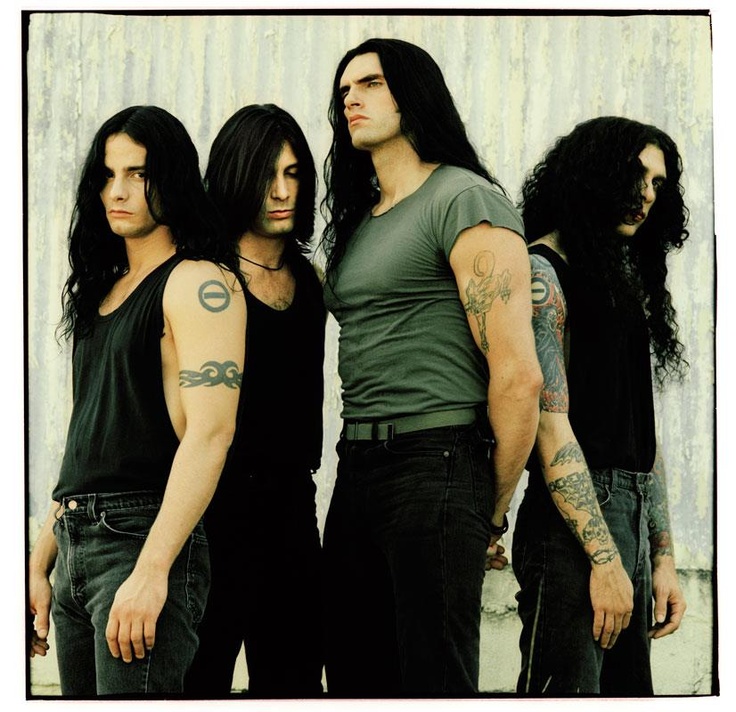

Kelly says that was also the date they could start moving gear into a local studio. Steele had found a place situated right between Hickey’s and Kelly’s, and was planning to move back by May 1 so they could begin writing and recording their eighth album. Hickey and Kelly were living in Staten Island Steele was in Scranton, Pa., with his girlfriend. We thought, ‘This guy’s going to be around forever.’ ”Īfter that, the band believed Type O Negative could survive anything: “We were going to be another Motörhead, and we were going to go out there and do this until we couldn’t do it anymore.”įollowing the Dead Again World Tour that ended in Detroit on Halloween 2009 - what turned out to be the foursome’s last show together - Kelly and Steele spoke often in the time leading up to his death. “You get to that kind of perspective of ‘Is he going to make it?’ that you can’t plan anything a year from now.” Then Steele found sobriety and was clean for nearly a year until his death. “There were points when we were like, ‘We don’t know if he’s going to live,’” recalls Kelly. When he was at his worst with drugs and alcoholism, no one knew if he would still be around.

There was a point, says Kelly, where Steele had done so much damage to himself that the band couldn’t plan too far ahead.

Throughout the years, Steele’s addictive personality left the band wondering what would come next. However, the vocalist-bassist kept his day job - driving steamrollers, snow plows, garbage and dump trucks for the New York City Department of Parks & Recreation - until 1994, when the band was asked to join Motley Crue and King’s X on tour. According to Nielsen Music/MRC Data, Type O Negative has sold 2.5 million albums and accumulated 98.4 million streams in the United States. The group maintained an international presence with 1996’s October Rust, 1999’s World Coming Down, 2003’s Life Is Killing Me and its seventh and final album, 2007’s Dead Again.

Crafted like the perfect soundtrack to a more sexualized Nosferatu-inspired flick, from orgasmic opener “Machine Screw” through to the hallucinatory instrumentation of “Can’t Lose You,” Bloody Kisses left its indelible mark on metal. 1 (Little Miss Scare-All)” and “Christian Woman.”Ī pinnacle for the band, Bloody Kisses introduced a more melodious and cinematic Type O, bursting through the new wave of ’90s goth culture and swerving into lanes of thrash (“Kill All the White People”), hardcore and industrial. 166 on the Billboard 200, 1993’s Bloody Kisses was a game-changer, earning platinum status and a deep cult following with the doom-y enthralls of the 11-plus-minute “Black No. The act debuted with Slow, Deep, and Hard in 1991, then followed up with 1992’s The Origin of the Feces. Steele’s gloomy baritone, towering stature (standing at nearly 6’8”), and vampiric good looks - which landed him a 1995 centerfold in Playgirl magazine - led Type O through the New York circuit, from regular local shows at the now defunct L’Amour nightclub in Brooklyn and the East Village’s the Ritz to worldwide tours. After Carnivore ended, Steele reconnected with Silver and longtime compadres Kenny Hickey (guitars) and Sal Abruscato (drums), forming Type O Negative in 1989. By the early 1980s, Steele had pieced together the politically incorrect Carnivore, which ran its thrash metal course through 1987. 4, 1962, and raised in Bensonhurst, Steele was in bands with childhood friend and future Type O keyboardist-producer Josh Silver since their teens. “It’s like the lasting impression, and still being in a band, still playing and constantly running into people that are fans.”īorn Petrus Thomas Ratajczyk in the Red Hook section of Brooklyn on Jan. “It’s odd to try to articulate because he passed away,” continues Kelly.


 0 kommentar(er)
0 kommentar(er)
